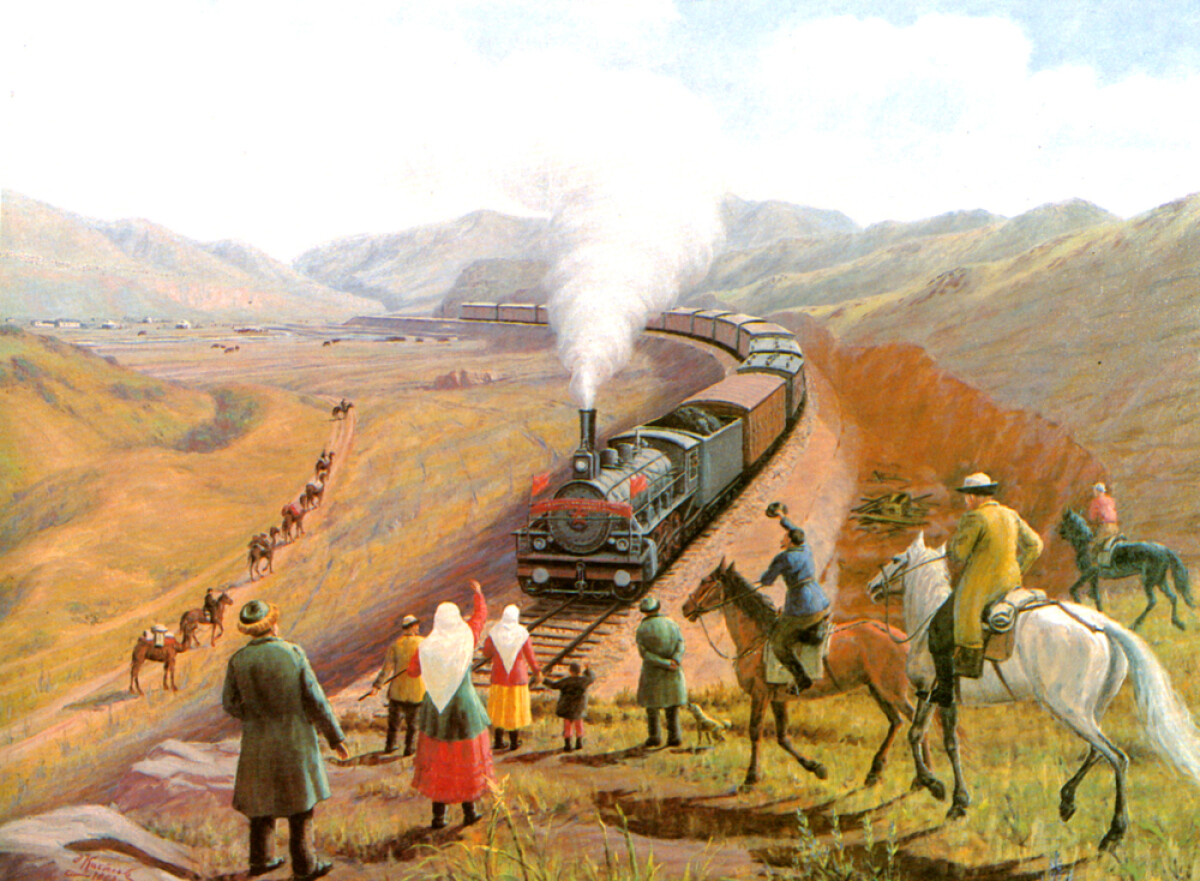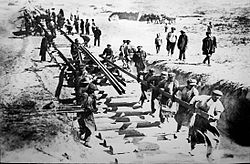
The construction of the railway line was part of the first five-year plan aimed at speeding up the development of the trade, rural, industrial infrastructure of the USSR.
During the construction, a huge campaign was carried out - the number of volunteers increased daily, despite the severe weather and climate conditions. Workers had to make their headway through deserted areas, through mountain massifs and near rivers which were in flood.

But the very idea of creating a highway that would connect Central Asia and Siberia appeared even in the century before last - in 1886. On October 15, a meeting of the city council in Almaty was held, where it was decided to convene a commission to analyze the acquisition of benefits from the construction of the road. The commission has found a number of advantages for this route, in particular, the simplification of imports and exports of grain and cotton, as well as the military presence of Russia in the region bordering China. This reason officially sounded as "preventing the penetration of Western European capitalism in Xinjiang."
The construction of the railway started on September 15, 1927 from the station of Semipalatinsk, from the other end its construction started from the station Lugovaya on November 19 of the same year. The head of the construction of Turksib was Shatov Vladimir Sergeyevich, who already had a great organizational experience. He took an active part in the revolutionary movement, but after the defeat of the first Russian revolution, he emigrated to America, where he lived for ten years. In 1921-22 he was appointed Minister of War and Minister of Railways and Communications in the Far Eastern Republic, which in fact was an exile. But later in 1932-33 he became deputy commissar of railways and communications and the head of Glavzheldorstroy.
Rapid change of personnel occurred both among employees who could quickly rise up the career ladder, and among senior executives.

The organization of the construction of Turksib was followed by Sergey Vitalievich Mrachkovsky. But in 1936 he was accused of sabotaging the construction of the line. Mrachkovsky was sentenced to death and shot.
On the other hand, the construction gave the Soviet Union new names. On the spot, a school was organized for construction workers; one of its graduates was Mukhtar Kaptagayev. Kaptagayev quickly mastered any work. Soon a simple, illiterate guy once became a machinist, and later a deputy of the Supreme Soviet of the USSR. Mukhtar Kaptagayev was awarded the State (Stalin) Prize of the USSR.
During the construction of the highway, a specially created Turksib Construction Assistance Committee was functioning, headed by Turar Ryskulov. More than 50 large scientists and professionals participated in the work of the Committee in the matter of railway construction. Turar Ryskulov was declared an enemy of the people, becoming, like many, a victim of a repressive machine that was gaining momentum in the 1930s.

Tynyshpayev Mukhamedzhan who was invited to the Committee by Turar Ryskulov, did a great job as an engineer and the chief of the part of the route of the Turkestan-Siberian railway. But in 1932 he was arrested, and five years later he was shot.
The first steam engine left the station of Lugovaya and solemnly drove through the arch, which was specially built on rails - it symbolized the yurt. On different sides of the arch were "Turkestan" and "Siberia". Above the locomotive there was a red bunting with the inscription "Give Siberia!"
The construction of Turksib was of great strategic importance for the whole of the USSR, it was widely covered in the press and in other cultural sources.
In 1929, a documentary by Viktor Turin “Turksib” was released which was highly appreciated by foreign critics.

Ilf and Petrov compared the Turksib builders to Robinson Crusoe, whom fate threw onto a desert island. In the beginning of construction there were also no residential premises, wells, and high-grade roads. But we can say that it was even easier for Robinson. He had one specific task: to save himself. The Soviet Robinsons had to do more difficult work: to build a new railway with a length of 1,442 kilometers. In addition, attentive readers in the novel "Golden Calf" can learn in the Eastern highway the famous Turksib.
"A Silver Crutch", which traditionally marks the construction of a new highway, was driven into the Ainabulak area in 1930. To create Turksib it took them 203.5 million rubles, and in 1930 this amount was 141 thousand rubles per kilometer.
Translated by Raushan MAKHMETZHANOVA
